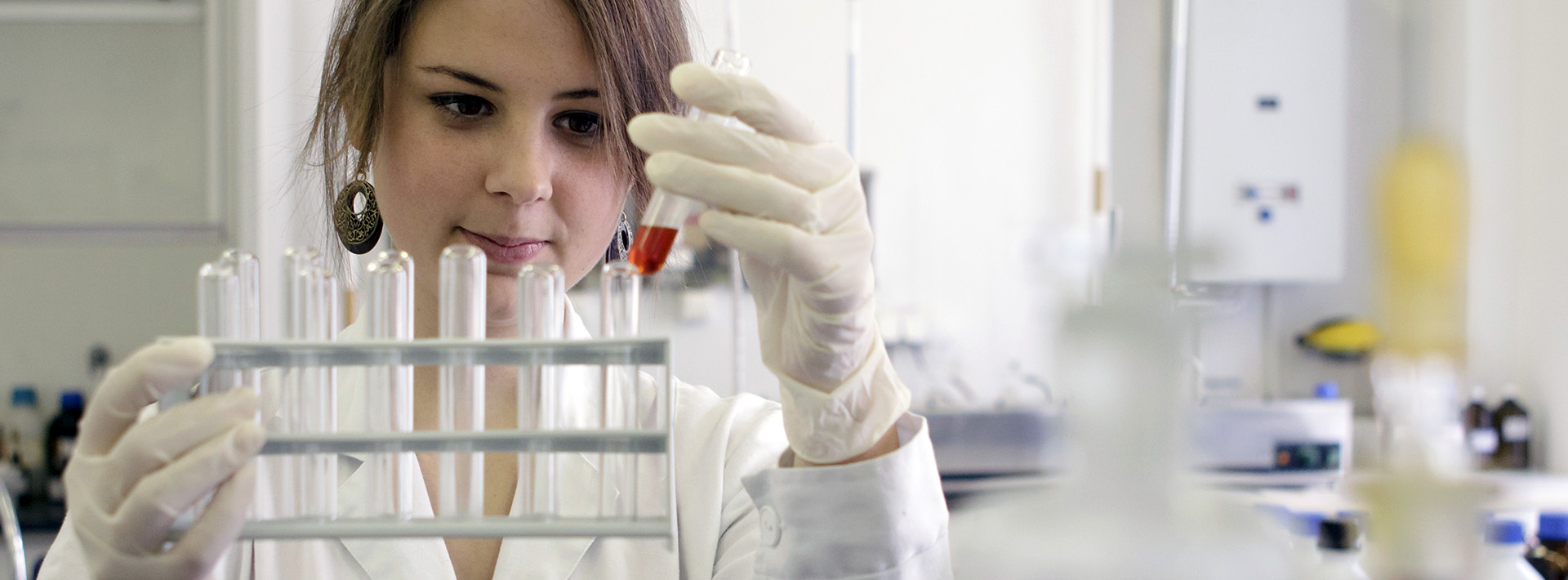Data
Official data in SubjectManager for the following academic year: 2022-2023
Course director
-
Dr. Beáta LEMLI
assistant professor,
Department of Pharmacology -
Number of hours/semester
lectures: 13 hours
practices: 13 hours
seminars: 0 hours
total of: 26 hours
Subject data
- Code of subject: OTF-SRK-T
- 2 kredit
- Biotechnology BSc
- Optional modul
- both semesters
-
Course headcount limitations
min. 4 – max. 10
Topic
Optical spectroscopic methods are well suited for the study of reversible interactions (e.g., protein-ligand) of drugs, nutrients, toxins, and other xenobiotics. During the course, students will get acquainted with the theoretical and practical applications of widely used UV-visible absorption, fluorescence emission, and fluorescence anisotropy measurements, and will then learn the use of these methods in the study of various reversible interactions through concrete examples. The knowledge gained in this way promotes the understanding of measurement techniques and evaluation options and develops students' problem-solving skills and creativity in connection with spectroscopic examinations.
Lectures
- 1. Description of the course requirements. Introduction: Optical spectroscopic methods. - Dr. Lemli Beáta
- 2. Theory of UV-visible spectrophotometry - Dr. Lemli Beáta
- 3. UV-visible spectrophotometry: examples of application - Dr. Lemli Beáta
- 4. Theory of fluorescence spectroscopy I. - Dr. Lemli Beáta
- 5. Theory of fluorescence spectroscopy II. - Dr. Lemli Beáta
- 6. Theory of fluorescence spectroscopy III. - Dr. Lemli Beáta
- 7. Theory of fluorescence spectroscopy IV. - Dr. Lemli Beáta
- 8. Characteristics of fluorescence emission: examples of application I. - Dr. Lemli Beáta
- 9. Characteristics of fluorescence emission: examples of application II. - Dr. Lemli Beáta
- 10. Fluorescence anisotropy: examples of application I. - Dr. Lemli Beáta
- 11. Fluorescence anisotropy: examples of application II. - Dr. Lemli Beáta
- 12. Summary and conclusions - Dr. Lemli Beáta
- 13. Written test - Dr. Lemli Beáta
Practices
- 1. General instructions for work in the laboratory, safety precautions.
- 2. UV-visible spectrophotometric measurement
- 3. UV-visible spectrophotometric measurement
- 4. UV-visible spectrophotometric measurement
- 5. UV-visible spectrophotometric measurement
- 6. Fluorescence spectroscopic measurement - fluorescence emission
- 7. Fluorescence spectroscopic measurement - fluorescence emission
- 8. Fluorescence spectroscopic measurement - fluorescence emission
- 9. Fluorescence spectroscopic measurement - fluorescence emission
- 10. Fluorescence spectroscopic measurement - anisotropy
- 11. Fluorescence spectroscopic measurement - anisotropy
- 12. Fluorescence spectroscopic measurement - anisotropy
- 13. Fluorescence spectroscopic measurement - anisotropy
Seminars
Reading material
Obligatory literature
Joseph R. Lakowicz: Principles of Fluorescence Spectroscopy, e.g. 3rd edition eBook ISBN 978-0-387-46312-4
Literature developed by the Department
The slides of the lectures are electronically available.
Notes
Recommended literature
Joseph R. Lakowicz: Principles of Fluorescence Spectroscopy, e.g. 3rd edition eBook ISBN 978-0-387-46312-4
Conditions for acceptance of the semester
Maximum of 15 % absence allowed
Mid-term exams
One written exam on the 13th lecture, the acceptance level is 60%. The topics of the written test are similar to the topics of the lectures. An accepted report about the practacies (lab book).
Making up for missed classes
There is no possibility to make up for a missed lecture and/or practice.
Exam topics/questions
The topics of the written test are similar to the topics of the lectures.
Examiners
Instructor / tutor of practices and seminars
- Dr. Lemli Beáta
